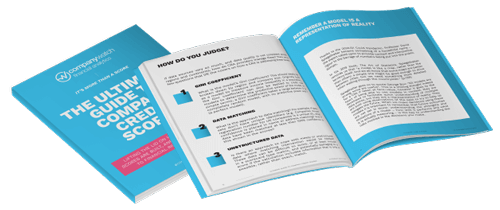Guide to Supply Chain Risk Management

In our current integrated global economy, disruptions in the supply chain can have disastrous ripple effects on companies. There are plenty of potential hazards to be aware of, from supplier failures and cyber attacks to natural disasters and geopolitical events.
Efficient supply chain risk management ensures resilience against these odds and largely uninterrupted operations in the event of a hazard.
But what does effective supply chain risk management look like? In this blogpost, we cover:
- What is supply chain risk management?
- What are some key supply chain risks to be aware of?
- Supply chain risk management strategies
What is supply chain risk management?
Supply chain risk management involves strategies designed to identify, assess, and mitigate any potential disruptions to a company’s supply chain. The end goal is to ensure the continuous flow of goods and services, regardless of unforeseen circumstances such as natural disasters and economic upheavals. These strategies can include advanced due diligence and KYC checks.
If risk analysis and management are done correctly, businesses can improve their resilience against risk, maintain customer satisfaction, and protect their bottom line.
What are some key supply chain risks to be aware of?
1. Regulatory risk
Regulatory risk is the possibility of facing legal action or suffering financial loss as a result of your suppliers' noncompliance with regulations. For instance, your business may be held accountable if a supplier engages in illegal activity as a result of improper KYC checks.
2. Environmental risk
Environmental risk is the possibility that your company would suffer as a result of your suppliers’ unfavourable environmental practices. For instance, they may exploit resources in a way that hurts the environment, contaminate the air or water, or cut down an excessive number of trees. These incidents can harm your company's operations, profits, and brand.
This risk also includes natural disasters which have the potential to harm infrastructure, deplete resources, raise expenses, and result in a labour shortage. These can cause supply chain delays, supply shortages, and increased pricing.
3. Operational risk
Operational risk is the danger of an issue arising within the operations of your own business. This can involve things like production hold-ups, malfunctioning equipment, staff errors, or issues delivering goods to clients.
Companies should conduct a thorough risk analysis to detect possible operational issues and have plans in place to address them if and when they arise.
4. Technological risk
Technological risk arises when there is an issue with the technology your business utilises to manage its supply chain. This can involve things like computer systems failing, information about your business being stolen by hackers, or the leakage of private consumer data.
Supply chain risk management strategies
Step 1: Identify risks
You can simplify the risk identification process by individually assessing all the links in the supply chain. It’s easier than it sounds.
First, make a map of every step in the production and delivery process. This covers details such as the location of the materials' manufacture, storage, and transportation facilities. Diligent KYC checks can provide you with more information about your supplier.
After obtaining this map, you should carefully examine every link in the chain to look for any potential hazards. These dangers can be listed and you can monitor them over time. If there are any links in the chain about which you don't know enough, you should make a note to investigate them further.
Step 2: Mitigate risks
The next step is to develop a framework to mitigate supply chain risks should they become significant. The best way to do this is to divide risks into 3 categories:
Category 1: The likelihood of a risk occurring
Category 2: The severity of the risk
Category 3: Your company’s capability to handle the risk
Developing this framework for each identified risk will help you prioritise what to focus on and how to allocate resources. To provide fair comparisons, it's critical to follow a standardised approach when scoring risks.
Step 3: Monitor risks
Ongoing monitoring of supply chain risks requires a sharp eye and robust processes (e.g. regular KYC checks) to track the likelihood of a risk arising. While unknown risks can be difficult to monitor, known risks such as the ones listed above can and should be monitored at regular intervals.
One of the key actions to perform here is supplier monitoring. Examine the performance of your suppliers, the quantity of goods you carry in stock, and the lead time it takes to receive orders from them. Any red flags should be noted and incorporated into the risk management map from Step 1.
More importantly, all supply chain risk management strategies and proposals should be reviewed and updated as needed. Some risks such as the occurrence of natural disasters are unpredictable. Therefore, having a framework for constant monitoring and reviewing of risks is essential to keep these strategies from becoming redundant.
Guarding against supply chain risk
Advancement in supply chain practises through technology and globalisation has brought with it new risks that must be identified and mitigated. To that end, having robust supply chain risk management policies is the need of the hour.
Company Watch specialises in a range of supply chain risk management solutions that allow you to know your supplier better and monitor any risks that may be associated with them. At Company Watch, we work with some of the biggest procurement departments in the country to help them actively manage their critical suppliers and reduce supplier risk.
Key takeaways
- The 4 key supply chain risks to be aware of are: regulatory risks, environmental risks, operational risks, and technology risks.
- Effective supply chain risk management involves identifying risks via a risk management map, building strategies to mitigate those risks, and engaging in constant monitoring and reviewing of the risks.
- Company Watch guards against supply chain risk by employing advanced know-your-supplier and risk monitoring solutions to optimise business operations and improve business preparedness when risks become significant.

